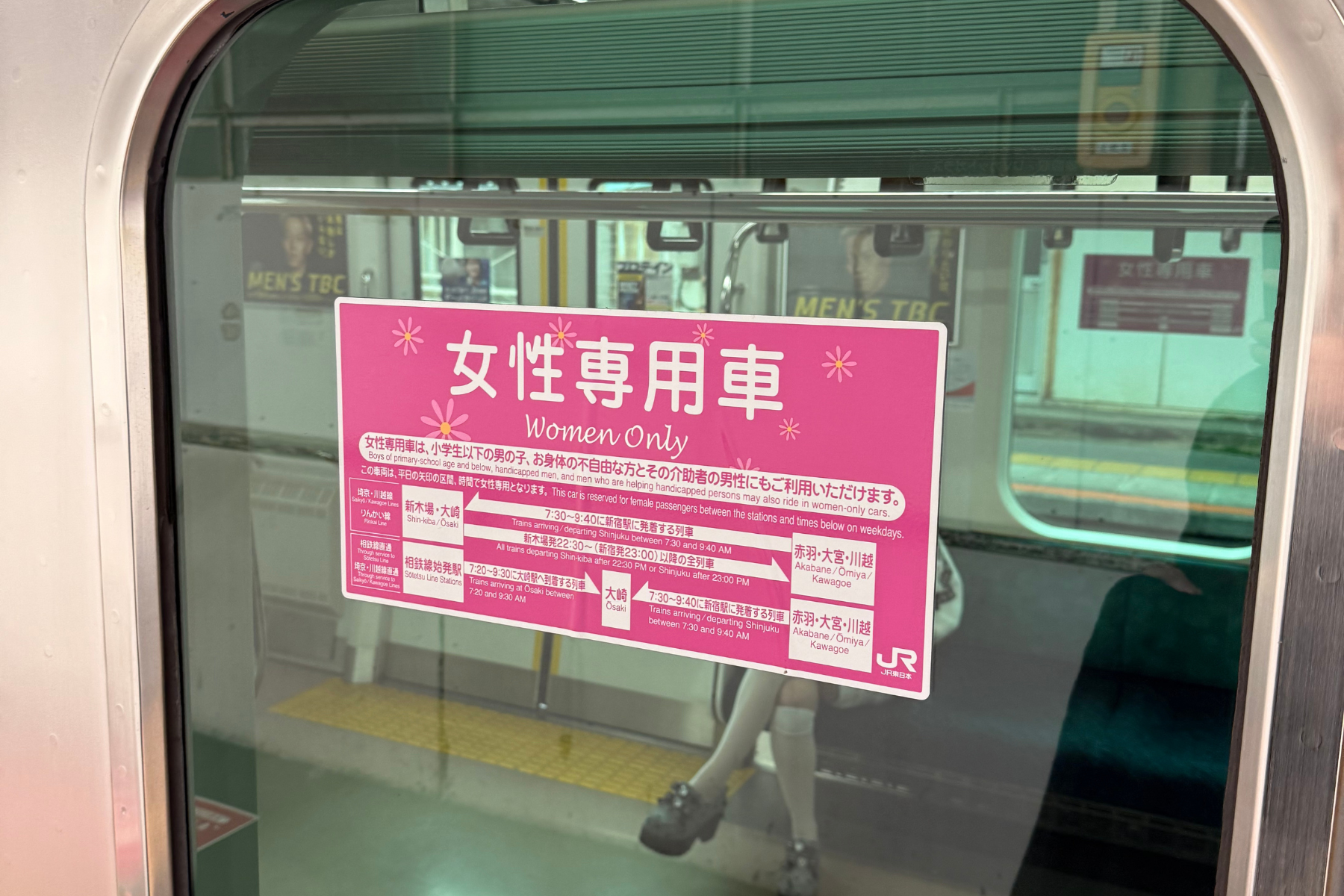Japan is known for its efficient and well-organized public transportation system, and one unique feature that surprises many travelers is the presence of Women-Only Cars on some train lines. These designated train cars provide a safer and more comfortable environment for women during crowded commuting hours.
For visitors, understanding when and how these cars operate can help ensure a smooth and respectful train experience. In this guide, we’ll cover everything you need to know about Women-Only Cars in Japan, including their purpose, rules, and how to avoid any mistakes as a foreign traveler.
What Are Women-Only Cars?
Women-Only Cars (女性専用車, Josei Senyou Sha) are special train cars reserved exclusively for women during designated hours, usually during morning and evening rush hours on weekdays.
These cars aim to provide a safer and more comfortable commuting experience by reducing incidents of groping (chikan) and overcrowding.
Many major railway operators in Japan, including JR lines, Tokyo Metro, and private railways like Keio, Keikyu, and Hankyu, have implemented these cars on select routes.
Who Can Use Women-Only Cars?
While these train cars are primarily for women, certain exceptions apply:
- Women of all ages
- Young children (boys up to elementary school age)
- Caregivers (both male and female) accompanying young children or disabled individuals
Outside of the designated hours, anyone—including men—can use these train cars just like a regular carriage.
When Are Women-Only Cars in Effect?
Women-Only Cars are generally available only during peak hours, which vary depending on the train line. These cars are typically in effect on weekday mornings (around 7:00 AM – 9:30 AM) and sometimes during evening rush hours.
How to Check the Hours
- Platform Signs: Look for pink or purple signs on the station platform indicating the presence of Women-Only Cars.
- Train Windows: Some train windows will have stickers or electronic displays marking them as Women-Only Cars.
- Timetables: If unsure, check the official website of the railway company or ask station staff.
Important Note: Outside the designated hours, Women-Only Cars function as regular train cars, and both men and women can use them freely.
How to Identify and Board a Women-Only Car
Women-Only Cars are usually located at specific positions on the train, often towards the front or rear of the train. To find one:
- Check the station platform markings – The boarding area for Women-Only Cars is clearly labeled.
- Look for pink or purple stickers on the train doors.
- Listen to station announcements, which often mention Women-Only Cars.
What If a Man Enters a Women-Only Car by Mistake?
Foreign travelers, especially men, may accidentally board a Women-Only Car if they are unaware of the rules. If this happens:
- Stay calm and do not panic.
- Exit the car at the next station and move to a regular car.
- If someone informs you politely, acknowledge the mistake and move to another car at the next stop.
Japanese people are generally understanding, and most staff or passengers will kindly point out the mistake if needed. Apologizing briefly with “Sumimasen” (すみません) and moving quickly will resolve the situation smoothly.
Why Are Women-Only Cars Important?
The introduction of Women-Only Cars in Japan was mainly in response to increasing cases of groping and sexual harassment (chikan) on crowded trains. While public transportation is safe, reports of inappropriate behavior led to strong demand for a safer space for women.
The Women-Only Cars help by:
- Providing a sense of security for female passengers.
- Offering a less crowded space during peak hours.
- Allowing Muslim women and those with cultural or religious preferences to feel more comfortable while commuting.
By respecting these train rules, visitors can help contribute to the smooth operation and cultural sensitivity of Japan’s transportation system.
Tips for Foreign Travelers
If you’re visiting Japan and using the train system, here are some useful tips to avoid confusion about Women-Only Cars:
How to Avoid Mistakes
- Check for Women-Only signs before boarding.
- If you’re unsure, ask station staff before getting on the train.
- Use translation apps (like Google Translate) to understand platform notices.
- Follow other passengers—if most men are avoiding a specific car, you should too.
- Be mindful of rush hours when these cars are active.
What NOT to Do
- Do not ignore the rules—it can make others uncomfortable.
- Avoid arguing if someone asks you to leave—just move to another car.
- Don’t assume all trains have Women-Only Cars—not every line uses them.
Final Thoughts: Respecting Women-Only Car Rules
Japan’s Women-Only Cars are an important part of the country’s train etiquette and safety measures. While they may not exist in many other countries, understanding and respecting these rules ensures a better experience for both locals and visitors.
Key Takeaways:
- Women-Only Cars operate during peak hours to provide safer spaces for female passengers.
- Men and women can use them outside peak hours when restrictions are lifted.
- If you accidentally enter, exit at the next station and switch cars calmly.
- Look for pink or purple signs on platforms and train windows to identify these cars.
- Women-Only Cars contribute to safety, comfort, and cultural sensitivity for commuters.
By following these simple guidelines, foreign travelers can navigate Japan’s train system respectfully and efficiently.
So next time you ride a train in Japan, check the signs, follow the rules, and enjoy your journey with peace of mind.

